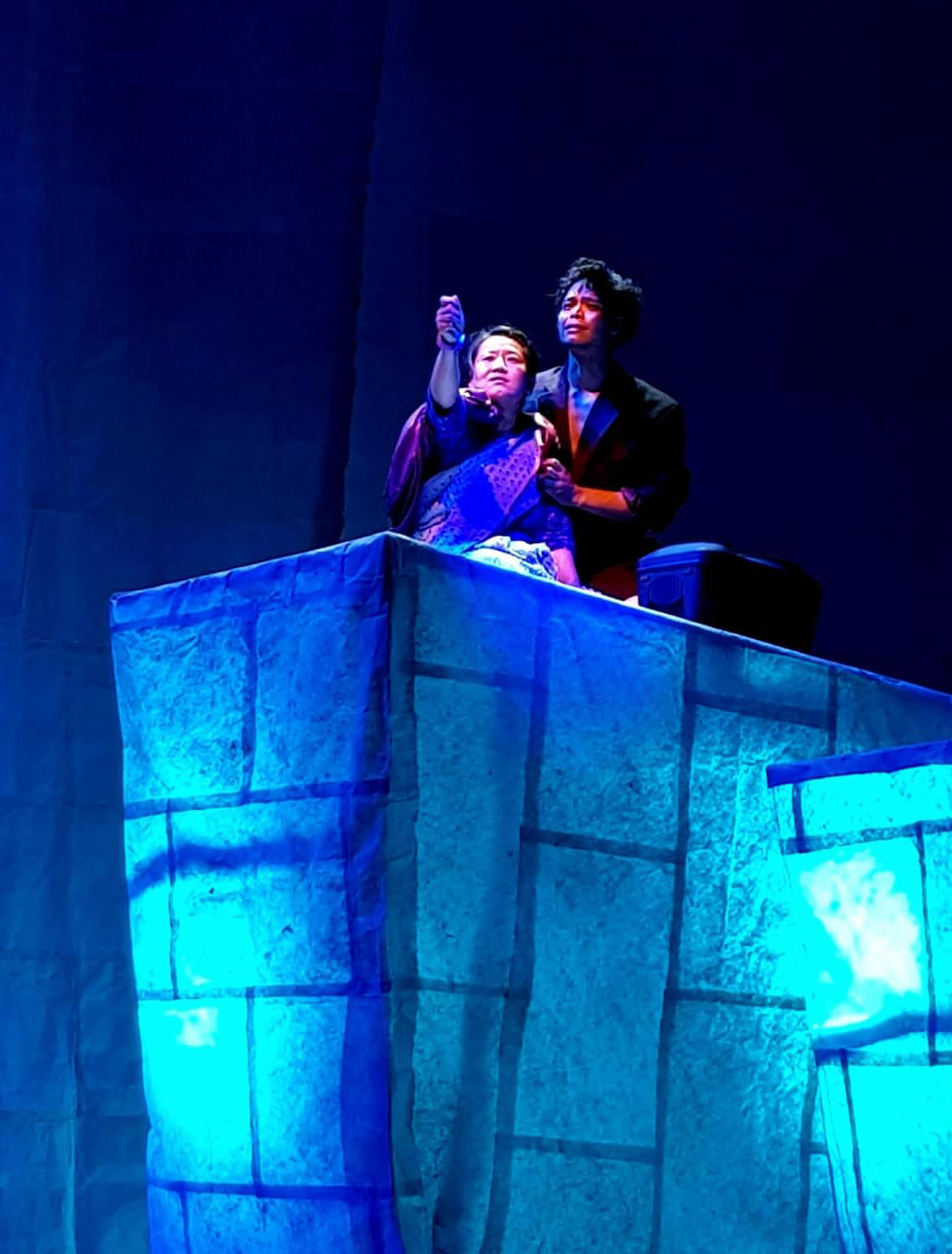Dance-drama takes trafficking head-on

Human trafficking makes for dramatic stories of suffering, struggle and survival, which is why it is frequently the theme on stage and screen performances. But few, perhaps, with the grace and poignancy of The Flight, presented by Solis Performing Arts and One World Theatre at the Russian Cultural Centre 4-7 July.
This immersive musical dance-drama directed by Alizé Biannic portrays not just the victimisation of young women and their emotional journeys, but tells their story through contemporary European-style dance steps.
The sheer physicality of the play makes the strongest impression, whether it is the women with the trembling knees, the exhibition of half-dressed, cowering women in front of leering men who, measuring each woman with their eyes and hands, menacingly circle them and haul them over their shoulders like sacks of potatoes.
Read also: All the world is a stage, Sewa Bhattarai
With minimal dialogue, every emotion -- terror, anger, guilt, hope -- is communicated through body movements, which is fitting because the subject matter revolves around physical relationships. Every action sequence has been framed carefully for visual appeal even when the emotions depicted are negative.
“I wanted every scene to look like a painting, because visual impact is very important in such a performance,” explained director Biannic, who trained the actors, most of whom Nepali non-dancers, in ballet-inspired moves so that they look almost as graceful as her.
The play does not just take us through the physical journeys of the characters, but also their emotional, spiritual and psychological ones. It starts with a young man whose family is involved in the ‘flesh trade’, and he wonders if he should join in. His journey begins with confusion, then acceptance, then guilt and finally abandonment of this trafficking activity.
Read also: Private is political, Sewa Bhattarai

“I want to depict the phenomenon from many aspects, including the story of how young men are unwittingly trapped in this vicious circle. Violence breeds violence, and you cannot expect love out of someone who has never seen it. This creates a chain of negativity where young men reproduce the behaviour they have seen,” says Biannic who met with several trafficking victims before writing and directing this play.
She wants to draw attention to continued trafficking of Nepali women to brothels in Nepal and abroad. The journey of the women is artfully invoked through symbols and visual metaphors. An eagle, a bird associated with power and spirituality, brings hope to the women. The women bathe, suggesting a spiritual cleansing even when their bodies have been defiled. The women look for an escape from their hell, their bodies writhing and contorting with agony. When they together overcome their pain, the choreography turns fluid and lithe.
Read also: Taboo no more, Ayesha Shakya
Biannic has blended classical Tchaikovsky and Stravinsky to create an intense background score that plunges and soars with the storyline. This and the ballet lends the production a strong European flavour, but the story and performance packs an emotional punch that is distinctly Nepali.
The Flight
Directed by Alizé Biannic
Russian Cultural Center
4-7 July, 1:30 PM & 6:00 PM
Biannic brings new edge to the Nepali stage
With her flitting butterfly moves and gravity-defying leaps, Alizé Biannic is mesmerising on stage. The ballet-trained artist’s approach to dance may be European, but her animated conversation and emotionally charged approach to art certainly strikes a chord here in Nepal. The French national has been living here for the past six years, creating and acting in plays that have added a cosmopolitan flavour to Nepali theatre.
Biannic started learning dance when she was 13 in Germany and Spain before working at The Royal Ballet in London. She developed her own style which merged acting and dancing because she thinks the combination works better. In 2013, she came to Nepal to take a year off, and has stayed here ever since.
She met a child while working in a Kathmandu orphanage who is acting in her current production, The Flight. “I realised that I wanted to work with people who are clear and open minded because it made me realise that my life was missing something,” confesses Biannic. “I want my life to have meaning, which I found in Nepal.”

Biannic takes the same approach to her work, where she likes to imbue every frame with meaning. Her actors do not just stand in the background, their body positions and movements are minutely choreographed, conveying specific emotions relevant to the scenes. Each person or object has a well-defined role to play in every scene, and every frame looks like a painting.
Biannic recently opened Solis Performing Arts, a school which teaches dance, acting and music. And when she is not teaching, she is acting or directing, and has since produced six plays and acted in others, including Arjuna’s Dilemma.
“I want to make the best of available resources to create quality drama right here in Nepal,” says Biannic, while adjusting the props, lighting, music, and costumes during a dress rehearsal on Wednesday. “Proper attention to technical details really raises the quality of production, and that should not be neglected.”




